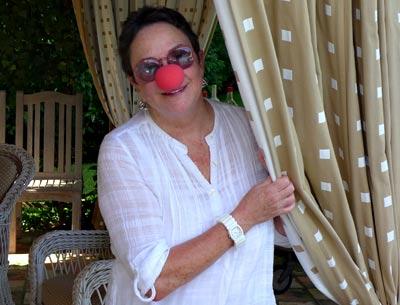Big Apple, More Than Just a Circus

When the Big Apple Circus presents a preview of its new show, “Metamorphosis,” at Guild Hall on Aug. 24, it will be the first time the artists in this year’s production will perform together. In fact, it was only on Monday that the aerialists, clowns, contortionists, illusionists, trapeze artists, and other talent that make up this year’s cast arrived in Walden, N.Y., to begin rehearsing together.
“Metamorphosis” previews in the ring in Virginia starting in September and opens at Lincoln Center on Oct. 17, then goes on to Bridgewater, N.J., and Boston, and closes its season in Queens.
The Guild Hall stage show is a joint fund-raiser for the cultural center and the not-for-profit circus, whose East Hampton supporters include Mary Jane Brock, vice chairwoman of the Big Apple board, and Barbara Slifka.
“There are so many worthy causes,” Ms. Brock said Tuesday at her house on Main Street, “but this one is pretty distinctive. Where else do you see an organization peddling joy? It’s multigenerational; it works for everybody. You do not have to be a child to enjoy the Big Apple Circus. It’s beautiful and sophisticated.”
The classical European-style one-ring circus was founded in 1977 by Paul Binder and Michael Christensen. “Part of our mission is to show people that circus is a noteworthy and worthy art form. That’s one of the reasons we appreciate being at Lincoln Center,” said Ms. Brock, who has served on the board since 1981, invited by Ms. Slifka’s late brother, Alan Slifka, Big Apple’s founding chairman.
Each year, there’s a new show with new performers and some who are back by popular demand, but there a few things audiences can be sure of, no matter the year: equestrian acts, clowns, jugglers, aerialists, “and we always have a dog act,” Ms. Brock said.
With young audiences “very often, the circus is the first live entertainment they’ve seen, and in today’s world with so many screens, to have a child experience live entertainment is so different,” Ms. Brock said. “There’s an exchange that takes place between the audience and the center ring. You’re no more than 50 feet from the artist, you see him sweating.”
On Aug. 24, people will have a chance to be even closer. Ms. Brock and her husband, Charles Brock, will host a reception at 3:30 p.m. with circus artists out and about among the guests in advance of the 5:30 p.m. show in Guild Hall’s John Drew Theater. Tickets to the reception and show cost $125, or $120 for members. Tickets for the show only start at $50.
As a not-for-profit, an important part of the circus’s mission is to “give back to the communities in which we perform,” Ms. Brock said. The “jewel in the crown” of those outreach efforts, by Ms. Brock’s estimation, is Big Apple’s Clown Care program, through which professional artists make “clown rounds” to pediatric hospitals and treatment centers all over the country, using “humor to help relieve stress and tension in a child’s room.”
She described a visit that served as the impetus for Clown Care. In 1986 Mr. Christensen was asked to perform at an annual Heart Day event for children who had undergone heart surgery at what is now New York Presbyterian-Columbia University Medical Center. He and his team parodied the doctors, made fun of the seven food groups, did a red-nose transplant on one of the doctors, and turned a big scary syringe into a flute that could be played. “Michael came away from that and said, ‘I want to create a program that lets me do this every day.’ ”
Big Apple also runs a Circus of the Senses for vision and hearing-impaired children and adults, a Vaudeville Caravan in Chicago in which performing duos visit with residents in nursing care facilities, two after-school programs, and offers free or discounted tickets to underserved children and senior citizens.
“My heart was hooked when I realized that instead of just writing a check, I could fill a tent with people who were my guests,” Ms. Brock said.
